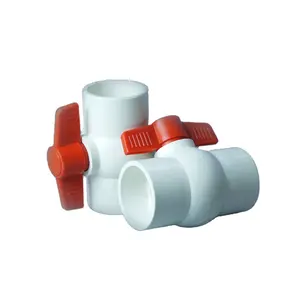Introduction to Check Ball Valves
Check ball valves are essential components in managing fluid dynamics within a piping system. These valves are specifically designed to prevent backflow, ensuring that the medium flows in a single direction, which is crucial for maintaining system integrity and efficiency. The check ball valve operates automatically, opening with forward flow and closing against reverse flow, making it an integral part of various industrial, commercial, and residential applications.
Types and Applications
The versatility of check ball valves is reflected in their various types, each suited for specific scenarios and applications. Silent check valves are preferred in systems where noise reduction is critical, while swing check valves are common in larger diameter pipes. The diversity extends to materials as well, with options ranging from durable stainless steel check valves to cost-effective PVC check valves, each offering distinct advantages in different environments.
Features and Materials
A check ball valve's features include its simple structure, reliability, and low maintenance requirements. The choice of material for a check ball valve is determined by the application's demands, including temperature, pressure, and the nature of the fluid. Stainless steel check valves offer robustness and corrosion resistance, making them suitable for harsh industrial conditions, whereas brass check valves are often selected for their resistance to temperature changes and malleability.
Advantages of Using Check Ball Valves
The incorporation of a check ball valve in a system offers numerous advantages. These valves are designed for longevity and can significantly reduce the risk of backflow and the potential for system contamination. Additionally, the self-actuating nature of these valves ensures that they respond promptly to changes in flow direction, which is critical for protecting equipment and processes.
Selecting the Right Check Ball Valve
Selecting the right check ball valve requires consideration of several factors, including the size of the valve, the pressure rating, and the end connection type. It is essential to match the valve to the specific requirements of the system to ensure optimal performance. For instance, a flanged check ball valve might be the preferred choice for ease of installation in industrial settings, while a threaded check ball valve could be more suitable for smaller, confined spaces.
Conclusion
Alibaba.com offers a comprehensive selection of check ball valves to meet the needs of various systems and applications. With a focus on providing a platform for a diverse range of suppliers, the site ensures that buyers can find the appropriate check ball valves to meet their specific requirements without the hassle of navigating through overly promotional content. By facilitating this connection, Alibaba.com remains a vital resource for sourcing industrial components.











































 浙公网安备 33010002000092号
浙公网安备 33010002000092号 浙B2-20120091-4
浙B2-20120091-4